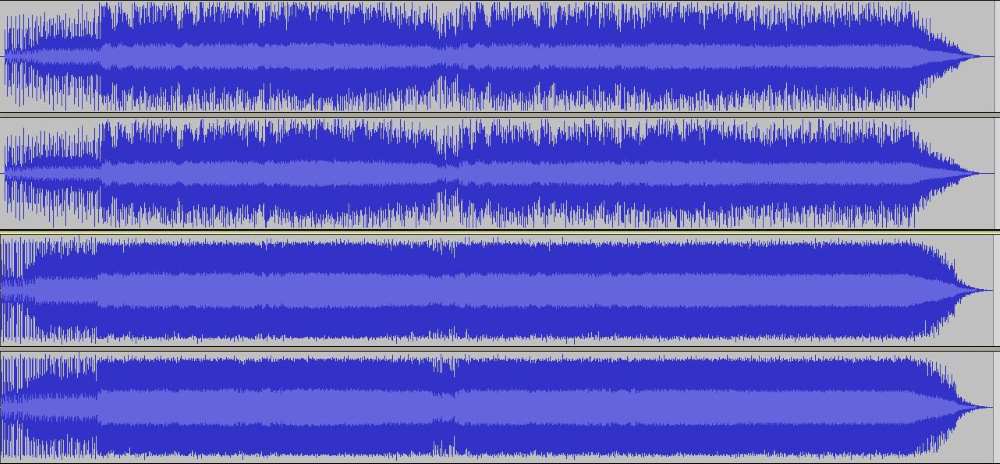
Before starting, look at the top image. These 2 sets of sound files, mastered/limited at different levels. The first one is from the 90s and the second one is what is being done post 2010. Just by looking at the graphic representations, you can tell that the first song has a lot of breathing space and room for expression, while the second one looks a bit like the life has been squeezed out of it. This is the loudness war in a nutshell- people competing to squeeze in as much volume as possible within the range that we can digitally produce.
So why is the loudness war happening? Usually, we perceive louder as better, even if a song might not be better mixed. Basically, music is getting progressively louder as time passes, thus becoming less dynamic and lively.
What are the basics of loudness? There are a few units used in measurement- LUFS (loudness units relative to scale and DBTP (decibels true peak). Our DAWs by default show a different unit- DBFS (decibels relative to full scale), which is does not show us the overall average loudness, just the momentary peaks. LUFS are actually closer to how our ear perceives loudness. It is similar to RMS (root mean square) but still closer to our own loudness perception. When mastering audio/music, it is highly recommended to get a measurement tool that includes at least these measures (but ideally give you access to more insights into your track’s dynamics, spectrum and similar):
- Short-Term LUFS – Short-term peak at the current listening point
- Integrated LUFS – overall loudness of the whole track
- Dynamic Range – the difference between the quietest and the loudest part of the track
- Momentary Max LUFS – the highest peak measured in LUFS within the audio/music that is being analysed
- True Peak – The maximum peak level of the audio measured real-time, measured in DBTP. Different from the regular peak (which relates to individual tracks inside the mix)
- Loudness range LUFS- measures the perceived loudness of audio material. Similarly to dynamic range, it tracks the difference in loudness between different parts of the audio
It is a big challenge to determine which loudness you should use, taking into consideration loudness perception, as well as different loudness standards presents on each streaming/music platform. Platforms apply loudness normalisation, which sets every audio file to the same integrated loudness. From my own experience, one loudness setting will never be perfect for every use case, but the most important thing is to find a compromise and choose a loudness/true peak level that sound solid on every service. Sometimes, the audio will be turned up, and sometimes turned down by certain services, depending on their own normalisation standards. Each platform will normalize the audio according to their own standards, so it is just important to make sure your source material dynamic range is good enough to not get completely squished by a music platform. The good news is that each platform recommends a dynamic range that is 9 DR or less (meaning 9 dbs difference between the loudest and quietest part).
Here are some of the standards used by the most popular platforms:
- Spotify – -14 LUFS/ -1 DBTP (-11/-2 is also fine)
- Deezer – -14 to -16 LUFS /-1 DBTP
- Beatport – -6 to -9 LUFS /-1 DBTP
- Apple Music – -16 LUFD/-1 DBTP
- Bandcamp – No loudness normalisation, but -2DBTP is recommended for the peaks due to low playback quality they offer
- Tidal – -14 LUFS/-1 DBTP
- YouTube – -13 to -15 LUFS /-1 DBTP
- SoundCloud – -8 to -13 LUFS /-1 DBTP
Sources:
https://www.masteringthemix.com/pages/mixing-with-levels#LoudnessRange
www.audiodraft.com/blog/audio-levels-101-all-you-need-is-lufs
https://artists.spotify.com/help/article/loudness-normalization
